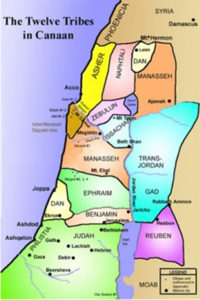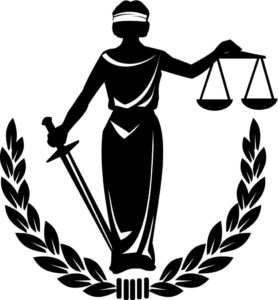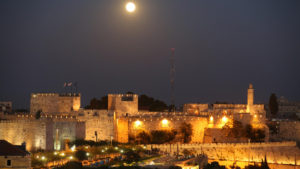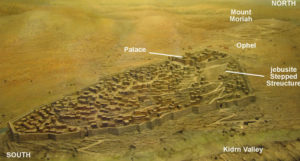The Place – Promises at Mt. Sinai
The Place – promises made at Mt. Sinai when God gave Moses the 10 Commandments. Actually prophecies, they were a key foundation for the Hebrews and building blocks for the Messiah.
Promises made were five: lead the Hebrews to the land He promised to Abraham, Isaac and Jacob as the place for their descendants to possess; the place to establish a kingdom; the permanent place for His Name to dwell; the exclusive place for Israel to observe the Passover; and the place for the Judgement Seat of Israel.[1]
God didn’t say exactly where the place would be other than it was in the land promised to Abraham although the Hebrews did not know exactly what this meant. Great faith in these promises was required for a fledgling nation of people who had just fled the only life they had ever known.
Moving to the place seemed like an impossible task, especially for a ragtag nation of tens of thousands of former slaves without a military. Doubts and lack of faith by the Exodus generation would cost them from seeing God’s promised land for two generations.[2]
None of these promises and expectations seemed like the remotest reality to the Hebrews who, after 400 years, were starting from scratch after escaping from under the harsh rule of Pharaoh. Yet, against all odds over the coming centuries, these five prophetic promises did become a reality.
 Israel conquered its enemies in the land promised by God to Abraham, Isaac and Jacob where each of the 12 tribes of the sons of Israel were allotted their own land regions.[3] Formidable and now-experienced military protected the nation even before the establishment of a kingdom.
Israel conquered its enemies in the land promised by God to Abraham, Isaac and Jacob where each of the 12 tribes of the sons of Israel were allotted their own land regions.[3] Formidable and now-experienced military protected the nation even before the establishment of a kingdom.
A king, the most famous in Hebrew history born in Bethlehem in the lineage of Judah, fulfilled the royal prophetic blessing of Judah. At first the giant-slayer, King David, ruled without a Seat of the Throne until he conquered and occupied the fortified city of Jebus or Salem, soon thereafter to be called Jerusalem also known as Zion.
A permanent place for the Name of God to dwell first required a temple. Fundamental to a theocracy, this temple had to be located near the king’s throne in the nation’s capital to be protected against heathen enemies.
King Solomon, son of David, built the the Temple on Mt. Moriah and is still known as Solomon’s Temple. Its Western Wall remnants have become a most holy place in Israel today.[4]
Consecrated and blessed by King Solomon, the first sacrifice was offered at the new Temple on its permanent alter. Miraculously, the sacrifices was ignited by fire sent down from heaven.[5]
According to God’s Law, the Passover was to be celebrated at its appointed time requiring sacrifices to be offered by the priests of God at a central permanent place of worship. Passover was then observed at its appointed time at the Temple where sacrifices were offered by the priests of God.[6]
For a theocratic government, the Judgement Seat also had to be located in close proximity to both the Throne and its temple.[7] The most important and most complicated cases of the nation were to be judged in the place God chose.
In a theocratic government, God’s Law served both as criminal code and the basis for civil court. Jerusalem became the Judgement Seat of Israel under the reign of Solomon where both major civil and criminal cases were decided.
Civil cases were decided by King Solomon on the porch of his palace, then on the east side of the Temple in the Hall of Judgement.[8] Criminal cases involving the highest level of offenses, including capital death cases, were tried in the Temple Court accessed through the Chamber of Hewn Stone.[9] Built into the northern wall of the Temple, the chamber served as the meeting place for the 70 elders of Israel, eventually the Sanhedrin.[10]
Nebuchadnezzar destroyed and ransacked Jerusalem and the Temple as punishment because the Hebrews did not honor their Covenant with God the people had agreed to do at Mt. Sinai. During the Persian Empire, the Temple was rebuilt under decrees by Cyrus, Darius and Artaxerxes; its gold contents returned, and observance of the annual Passover resumed until Jerusalem was destroyed by Rome in 70 AD.[11]
God’s five big promises from Mount Sinai laid the ground work for Israel’s future in the place and eventually the foundation of various Messiah prophecies. Over the coming centuries prophets Isaiah, Zechariah, Jeremiah and Micah among other prophets would give details and expectations about the Messiah who would come from the House of David.[12]
All five promises made by God at Mt. Sinai about “the place” came to pass. What are the odds it was all just an extraordinary coincidence?
Updated February 4, 2024.
This work is licensed under a Creative Commons Attribution-NonCommercial-NoDerivatives 4.0 International License.
REFERENCES:
[1] Deuteronomy 1:6-8, 39; 17:8-10, 14. CR Genesis 17, 22, 35, 49; Exodus 19:6; 23:20; Deuteronomy 1:8, 12:11, 16:2, 17:20.
[2] Deuteronomy 1:34-40; Numbers 13, 14:26-35. Wood, Bryant G. BibleArchaeol0gy.org. 2009. “The Number of Israelites in the Exodus.” <https://biblearchaeology.org/research/chronological-categories/exodus-era/3943-the-number-of-israelites-in-the-exodus> “How Many Israelites Really Left Egypt?” JewishBelief.com. n.d. <https://jewishbelief.com/how-many-israelites-left-egypt/>
[3] Deuteronomy 3:12-17. “The Twelve Tribes in Canaan.” Maps Database Source. map. 2020. <https://mapdatabaseinfo.blogspot.com/2018/05/32-map-of-promised-land-joshua.html#
[4] 1 Kings 6; 2 Chronicles 3.
[5] I Chronicles 6; Leviticus 9; Nehemiah 11.
[6] Exodus 12:14-15; Leviticus 23:4-8,; II Chronicles chapters 8, 29, 34-35:19; Ezra 6:16-22. Coulter, Fred R. cbcg.org. The Christian Passover. Chapters 12-13, Part 1. n.d. <https://www.cbcg.org/booklets/the-christian-passover/chapter-twelve-when-and-why-the-temple-sacrifice-of-the-passover-was-instituted-part-one.html> 
[7] Deuteronomy 17:8-10. CR Exodus 18.
[8] 1 Kings 3, 4, 7:7. “Solomon’s Porch.” Encyclopedia of the Bible. n.d. <https://www.biblegateway.com/resources/encyclopedia-of-the-bible/Solomons-Porch> “Solomon’s Porch.” BibleVerseStudy.com. n.d. <https://www.bibleversestudy.com/acts/acts5-solomons-porch.htm> “Temple of Herod.” JewishEncyclopedia.com. 2011. <https://jewishencyclopedia.com/articles/14304-temple-of-herod> “Solomon’s Porch.” Bible-History.com. n.d. <https://bible-history.com/backdrops/solomons-porch>
[9] Schoenberg, Shira. “Ancient Jewish History: The Sanhedrin.” 2017. <http://www.jewishvirtuallibrary.org/the-sanhedrin> Shachter, J. and Freedman, H. Soncino Babylonian Talmud. Ed. Isidore Epstein Introduction. <https://www.halakhah.com/sanhedrin/>
[10] Exodus 18; Deuteronomy 1, 17; II Chronicles 19:8:4-11. Shachter and Freedman. “Introduction to Sanhedrin.” Soncino Babylonian Talmud. <https://israelect.com/Come-and-Hear/sanhedrin/index.html> Ariel, Yisrael. “The Chamber of the Hewn Stone.” The Temple Institute. 2014. <https://www.templeinstitute.org/illustrated/hewn_stone_description.htm> Ariel, Yisrael. “Blueprints for the Holy Temple.” <http://www.templeinstitute.org/blueprints-for-the-holy-temple.htm>
[11] Isaiah 52-53. Sanhedrin 16a, 17a. Shachter, J. and Freedman, H. “Sanhedrin.” Josephus. Antiquities. Book IV, Chapter VIII.14; Book XX, Chapter IX.4. “Ancient Jewish History: The Beit Din.” Jewish Virtual Library. 2017.http://www.jewishvirtuallibrary.org/the-beit-din>
[12] Isaiah 7, 9; 11; Jeremiah 23, 33; Zechariah 3, 6, 12.



